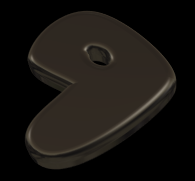The Funtoo Linux project has transitioned to "Hobby Mode" and this wiki is now read-only.
User:Drobbins
Location
Howdy. My resume.
File:DanielRobbins.jpg

Things To Do
- Create new mirror clean-up script.
- grep HOWTO? requested by biberao
Zenoss Snippets
o=dmd.getObjByPath("/zport/dmd/Locations/Funtoo Loft/Desk/Lower Shelf/Right")
NinjaCluster
- Set up own NS for IPv6, have foo.funtoo.org delegate to it.
- Set up radvd on the master node.
- For VE's, enable IPv6 and have them use stateful address autoconfiguration to get an IPv6 address based on their MAC address.
- For each VE, create a DNS entry for their IPv6 address. This will allow users to get to their box directly via IPv6.
- For legacy IPv4, use an ugly port-forwarding solution with socat or haproxy?
OpenVZ HOWTO
First, find an unused VEID by typing ls /vz/private -- pick the next unused number, such as 109. Next, find a template by typing ls /vz/template/cache. Now:
# vzctl create 106 --ostemplate funtoo-openvz-core2_64-funtoo-current-2011-08-22 # vzctl set 106 --applyconfig unlimited --save # vzctl set 106 --netif_add eth0,,,,brlan --save # vzctl set 106 --name oleg --save # vzctl set 106 --hostname oleg --save # vzctl start 106 # vzctl enter 106 (in VE) oleg # rc-update add dhcpcd default (in VE) oleg # rc
Done! The VE now has network access via a private IP address and NAT (bridged.)
OTHER TODO
the python eclass design has some problem. For example, twisted depends on zope-interface, and it can be installed. but it may not be built for python-2.7. So the dep will be satisfied, but python still needs a rebuild. Solution would be to have multi-package support (multi-slot), dynamic slot.
2010 Volkswagen GTI MK6
I own a 2010 Volkswagen GTI. This section contains my personal notes on the car.
Rear seat removal: www.golfmk6.com/forums/showthread.php?t=17927 Ohlins MKV kit: www.worksevo.com/store/product_info.php?cPath=198_266_270&products_id=1749
Weights (Euro-spec, from vw.com):
- Golf 2.5L Manual 2,968 lbs
- Golf 2.5L Manual 3,023 lbs
- Golf TDI Manual = 2,994 lbs
- Golf TDI DSG = 3,041 lbs
- Golf GTI Manual = 3,034 lbs
- Golf GTI DSG = 3,080 lbs
Note: VW lists no difference in 2-door and 4-door vehicle weights.
Golf MK6 DriverGear Springs
- Golf TDI 4-Door Manual or Golf 2.5 4-Door Manual = 5K4071677A
- Golf TDI 2-Door Manual or Golf 2.5 2-Door Manual = 5K3071677A
- Golf TDI 4-Door DSG = 5K4071677B
- Golf TDI 2-Door DSG = 5K3071677B
Note: There are no DriverGear Golf springs made specifically for the GTI.
Modifications
Audi S3 Intercooler
The Audi S3 intercooler (Audi part number 1K0145803P) can be used to replace the stock VW intercooler, and forums.vwvortex.com/showthread.php?4561165-Well-the-S3-intercooler-fits-the-TSI-just-fine..../page6 is reported to result in very significant power gains that exceed that of a downpipe upgrade. The Audi S3 intercooler, while visually similar to the stock GTI intercooler, is slightly deeper and has significantly more surface area and less restrictive airflow.
Total cost for this upgrade is approximately $280 for the upgraded intercooler ordered online from a discount Audi parts supplier, plus about $10 for additional parts (bolts and hose clamps) that are available at a local hardware store:
- 9 ea. 6mmX1.0X16mm bolts (Home Depot) ~ $3.30
- 2 ea. #36 2 3/4" ideal hose clamps (Home Depot, plumbing section) ~ $2.00
Installation time is approximately 2 hours, and it is easier as a 2-person job. The installation steps involve cutting the factory OEM hoses about 2" and using the hose clamps to install the hoses to the intercooler. These steps are detailed in forums.vwvortex.com/showthread.php?4561165-Well-the-S3-intercooler-fits-the-TSI-just-fine.... this VWVortex post. goapr.com/support/trans_fsi_ic_manual.pdf APR's intercooler installation instructions may also be a helpful resource for installing the S3 intercooler.
Unibrace XB and UB
It is a common myth that "quality" auto manufacturers design a car's chassis to be extremely rigid. The reality is that this is not true, and things like doors and open spacious cabins tend to create weak points in the rigidity of the chassis. Automobile manufacturers simply ensure that the car's chassis is sufficiently rigid for the driving style of the typical consumer and has sufficient rigidity to meet current safety regulations and ensure passenger safety. Any additional chassis rigidity that exceed these requirements tend to drive up manufacturing costs and weight without providing meaningful benefits to the typical consumer, and the typical consumer cares much more about fuel economy and engine horsepower than chassis rigidity when making a purchasing decision, so there is generally no benefit to the manufacturer to design a car with an extremely rigid chassis.
For this reason, automobile chassis tend to be designed to be "rigid enough" for the average driver on average (good quality) roads, but no more. Some purpose-built cars such as the Honda S2000 are built with very rigid chassis designs from the factory; however, these vehicles are the exception rather than the rule. Even so, cars like the Honda S2000 have weak points in various places (in the case of the Honda S2000, the convertible design introduces some flex in the rear-mid chassis area directly behind the driver, and front underbody X-braces are popular for address a weakness directly below the engine.)
The point here is that unless you are buying a supercar or true race car, it is very likely that the rigidity of your chassis can be improved significantly, to the point that it will make a significant improvement in handling, vibration/harshness, and general "feel".